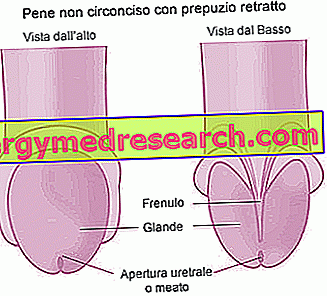Generality
Introduction to semolina
Semolina is a flour that is obtained by grinding durum wheat (a botanical species called Triticum durum, belonging to the Poaceae / Gramineae family).

According to food legislation, the term "semolina" refers exclusively to the product of grinding durum wheat seeds, while the term "flour" is used only for powder derived from soft wheat.
There is also a significant difference between the semolina and the remilled semolina . Compared to the first one, thanks to a further shredding and refining, the remilled semolina has a lower granulometry and a higher level of purity, which gives it different chemical-physical properties. There are also integral semolines which, as we shall see later, maintain the fibrous portion of the "cruschello" (see below).
Semolina is a food rich in starch; it also contains a good percentage of proteins, among which gluten is also present. On the other hand, specific leavening peptides are more abundant in soft wheat flour and for this reason semolina is considered more suitable for the production of pasta; on the other hand, today the semolina finds (or better, finds again) wide use also in the baking and packaging of bakery products.
Production
Technological aspects of semolina production
The production of semolina is essentially based on the grinding of durum wheat seeds.
The yield of semolina production is 60-64%, while the flour products (ashes, proteins and other dark ones eliminated in refining) correspond to only 8-12%.
Below we briefly summarize the semolina production phases.
- Durum wheat production
- Grain reception in the production cycle
- Discharge and pre-cleaning - Elimination of waste
- Clean wheat storage
- Pick-up and second cleaning - Elimination of waste
- Storage in premix cells
- Grinding mixture
- Cleaning - Elimination of waste
- Conditioning with humidity regulation
- Grinding - Semolina - I obtain by-products such as bran, bran and middlings
- Rimacina - Re-milled semolina
As anticipated, from the semolina it is possible to obtain the remilled semolina through a further process of working, which consists in rolling with striped cylinders; the whole product is obtained in the same way but through a grinding which includes the bran.
Nutritional properties
The primary nutritional function of vegetable flours based on starchy seeds is above all:
- Energetic, thanks to the remarkable content of complex carbohydrates
- Source of dietary fiber
- Specific mineral and vitamin source.
On the other hand, with reference to the III fundamental group of foods, the semolina and the regrind are distinguished by the high content of proteins with a medium biological value.
The contribution of potassium, iron and phosphorus minerals is noteworthy, as is the vitamin content of the B group of B1 (thiamine) and PP (niacin).
The presence of carotenoids is interesting, with particular reference to lutein and, to a lesser extent, to beta-carotene. These two molecules - identifiable as pro-vitamins A - seem to show a fair health value, which would make the difference in the comparison of the antioxidant power (anti-aging, anti-cancer, etc.) with the other flours.
Wholemeal semolina and re-milled contain, compared to refined ones, higher quantities of fiber, fats (also phytosterols), proteins, vitamins and minerals; consequently, they have a lower concentration of starch.
The semolina lends itself to any diet, but the foods that contain it must be taken in adequate quantities by overweight subjects, by type 2 diabetics and by hypertriglyceridemics. In these cases the integral one could be more adequate, less caloric and with a lower glycemic load and index. The higher percentage of fibers makes this product more suitable even in the case of constipation.
Containing gluten, the semolina must be excluded from the diet of celiacs. It does not contain lactose.
It has no contraindications for vegetarian and vegan philosophy.
The medium portion varies according to the recipe in which the semolina is used.
| Remilled semolina | Whole remilled semolina | |
| Humidity | 14.0 | 14.0 |
| Protein | 11.5 | 12.0 |
| Lipids | 0.5 | 1.9 |
| Starch | 68.2 | 59.7 |
| Dietary fiber | 3.6 | 9.6 |
| Energy (kcal) | 339 | 319 |
| Mineral elements (mg / 100g) | ||
| Sodium | 12 | 3 |
| Potassium | 170 | 337 |
| Iron | 1.3 | 3.0 |
| Football | 17 | 28 |
| Phosphorus | 165 | 300 |
| Vitamins (mg / 100 g) | ||
| Thiamine or B1 | 0.19 | 0.40 |
| Riboflavin or B2 | 0.15 | 0.16 |
| Niacin or PP | 2.0 | 5.00 |
Technological characteristics
Semolina and flour: main nutritional differences
Compared to the average of soft wheat flour, durum wheat semolina and semolina have a higher protein and gluten content. The semolina and the regrind, both refined and whole, are also richer in ash and lutein (carotenoid, provitamin A, responsible for the yellowish color of the product).
Sample | Protein (g / 100 g) | Gluten (g / 100 g) | Ashes (g / 100 g) | Lutein (g / 100 g) | |
| wet | Dry | ||||
| Full regrind | 15.0 | 42.9 | 14.5 | 0.86 | 7.16 |
| rimacinata | 14.4 | 39.6 | 14.9 | 0.75 | 5.68 |
| Whole wheat flour | 12.5 | 32.1 | 11.3 | 0.43 | 0.88 |
Water absorption of semolina
The high concentration of proteins and the presence of so-called "damaged" starch (mechanical breakage during the grinding) give the semolina and above all the regrind a greater absorption of water, with an increase in the yield in the dough; it is possible that this factor, influenced above all by the degree of sifting, also contributes to the abundance of ferulic acids (carboxylic chains with antioxidant function), which in the semolina are present in double quantities compared to soft wheat flour.
It is estimated that from 100 kg of regrind, about 135 kg of baked bread can be obtained (much more than soft wheat flour). This greater water retention, remaining also in the finished product, determines an increase in conservation in relation to the refining process (see "Stale Bread").
| Sample | Degree of sifting | Water bound | Absorption capacity |
| Common wheat | 75 | 46.4 | 50.0 |
| 85 | 48.4 | 54.1 | |
| 96 | 54.1 | 62.8 | |
| Durum wheat | 75 | 46.4 | 70.4 |
| 85 | 50.6 | 73.5 | |
| 96 | 52.2 | 78.0 |
| Nature of the flour | Colloids capacity to bind water (%) |
| Common wheat | 47.8 |
| Durum wheat | 51.8 |
| Barley wheat | 51.8 |
| Oat wheat | 45.8 |
| Spelled wheat | 47.8 |
| Potato wheat | 29.4 |
Durability of the semolina
Strength, toughness and extensibility compared to total proteins
The chemical properties of the two cereals and the related flours also determine mixtures with different physical characteristics.
The Chopin alveograph (an instrument for measuring the strength, toughness and extensibility of a dough) reveals a high tenacity with respect to the elasticity of semolina-based mixes; the tenacity / elasticity ratio is therefore higher (P / V> 1.5) compared to common wheat, with a strength of around 190-200 W.
| Durum wheat variety | Proteins (Total Nitrogen X 5.70) | W | P / L |
| Duilio | 12.4 | 179 | 3.04 |
| Creoso | 12.8 | 18/2 | 2.20 |
| Ofanto | 12.8 | 131 | 1.28 |
| Grace | 12.8 | 184 | 1.31 |
| Coliseum | 12.3 | 177 | 1.04 |
| Svevo | 14.0 | 223 | 1.97 |
The durum wheat varieties most rich in total proteins (for example the Swabian) show a higher strength. However, the global peptide supply does not seem to directly affect the P / L ratio (a characteristic observed on the Dulio and Creso varieties).
Cultivation climate and amylase activity
Semolina and remilled semolina, due to the torrid climate of the durum wheat cultivation areas, have a low "amylase activity" (catalytic power of alpha-amylase enzymes). This results in a greater “fall number” (Hagberg index, measured with the amylograph, which corresponds to the estimate of the alpha-amylase activity on a dough) with values over 500 seconds.
In the case of bread making with carryover dough or sourdough, the greater number of drops (low amylase activity) requires a significant increase in leavening times. To obviate this inconvenience and maintain the same timing while avoiding the risk of obtaining heavy and little leavened breads, malt or amylase enzymes can be added to the mixture.
History
Historical notes on durum wheat and semolina
That of durum wheat replaced the earliest cultivations of farro, from Magna Graecia to the rest of the south-eastern Mediterranean, already in the fifth century AD. The production of semolina, which was initially of a domestic type, which had become artisanal, soon had to satisfy the commercial demand of many areas far from the cultivation site.
The semolina-based bakery, which is now back in the limelight after having been replaced by soft wheat flour for many years, was originally carried out at home.
For many centuries the families of the Italian peninsula (especially in the south) have kept a supply of dried durum wheat seeds which, when needed, were ground into semolina for bread-making (with their own mill or using that of the town, about twice a month ).



